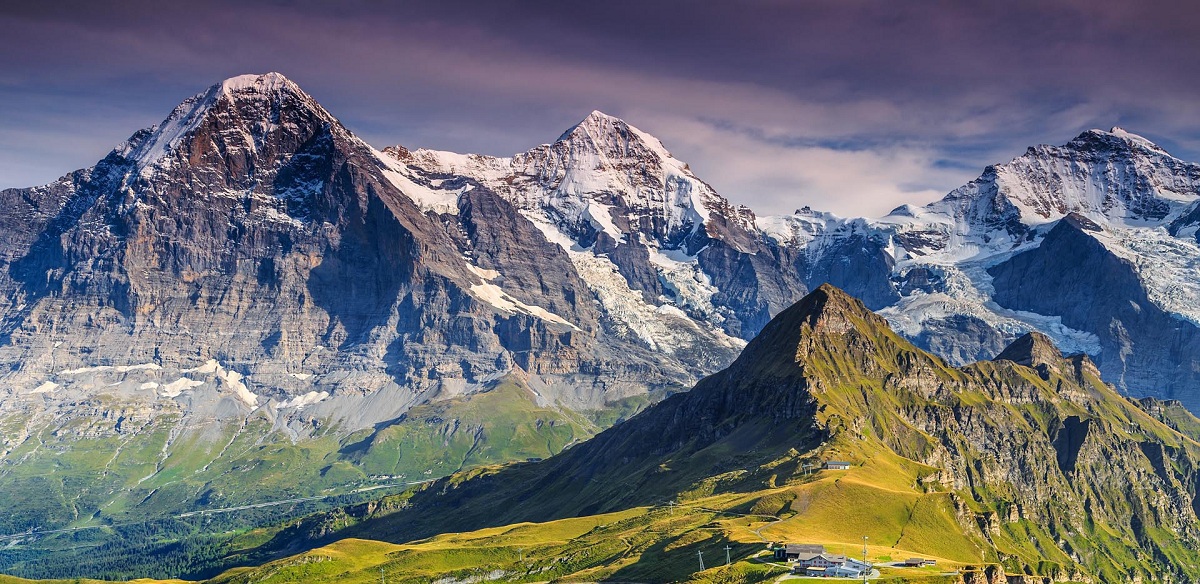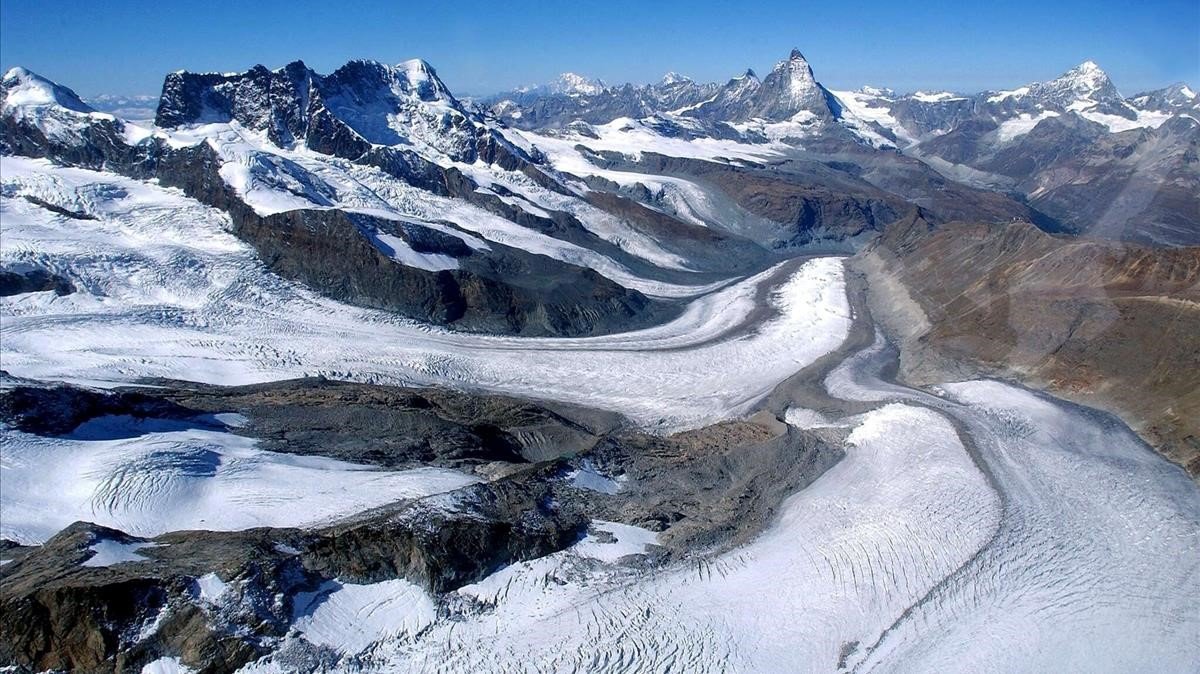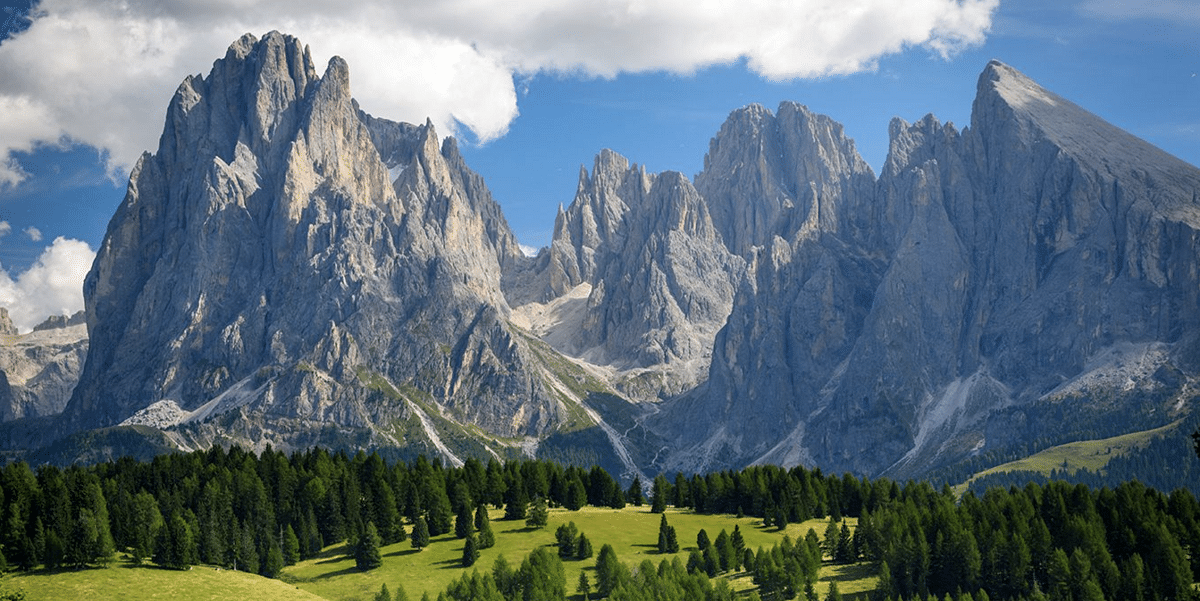
One of the best known mountain systems in the world and that is located in Europe are the Alpes. It is a mountain range that is considered the longest in all of Europe and extends through 8 countries. It passes through Austria, France, Germany, Monaco, Switzerland, Slovenia, Italy and Liechtenstein. The true countries have pines are considered Austria and Switzerland. For this reason, it is also called the Swiss Alps. These mountains occupy an essential place in the geography of the countries and much of the culture has its origin in this mountain range.
In this article we are going to tell you all the characteristics, formation, geology, flora and fauna of the Alps.
Key features

Alpine landscapes are strikingly beautiful and have shaped the culture of many countries. These landscapes are present in many mountain areas and towns in the region that have become a very popular tourist destination. In these areas, skiing, mountaineering and hiking and has more than 100 million tourists each year.
The former are geographically located in an arc of more than 800 kilometers in southeastern Europe. It extends from the Mediterranean Sea region to the Adriatic Sea area. It is considered as the nucleus of other mountain systems such as the Carpathian and Apennine mountains. Among all its mountains we do not find him Monte Cervino, the Massif del Monte Rosa, and the Dom, Mont Blanc is its highest peak, while the Matterhorn is possibly the best recognized thanks to its shape. All these characteristics make the Alps considered one of the best-known mountain systems in the world.
The origin of the word for the Alps is now known exactly. It may come from a Celtic term that means white or tall. The word is derived directly from the Latin term Alps, through French. The entire region of the Alps has been a place where many peoples settled from the late Paleolithic to the present day. In the would you can see how Christianity was gaining ground in Europe and several monasteries were established in the mountains. Some of them were built in the highest areas and the villages were able to grow around them.
History tells us that the Alps They were considered as a difficult barrier to overcome to access other regions and religious sites. They were also considered dangerous places because of the many avalanches and mysterious places. It was already in the nineteenth century when technology could allow exploration research.
Geology of the Alps

The entire mountain system of the Alps is more than 1.200 kilometers long and is located entirely on the continent of Europe. Some of Its peaks exceed 3.500 meters in height and it has more than 1.200 glaciers. The snow level is around 2.400 meters, so it houses enough places to do snow tourism. The peaks remain permanently covered with snow forming large glaciers and remain above 3.500 meters in elevation. The largest tele glacier is known by the name of Aletsch.
It is considered as the nucleus of other mountain systems such as the pre-Alps mountain ranges in which the Jura massif is located. Some sections of this mountain range extend through parts of Hungary, Serbia, Albania, Croatia, Bosnia and Herzegovina, and Montenegro.
From a geological point of view, we can divide this mountain range into sections: central, western and eastern section. In each of these sections to different subsections or subgroups of mountains. Geologically we can also distinguish the southern Alps whose limit with the rest of other areas are the valleys of Valtelina, Pusteria and Gailtal. In the southwest in are the Maritime Alps located near the Mediterranean Sea and form a natural border between France and Italy. In fact, the peak of Mont Blanc is known to lie between France and Italy and contains the longest glacier in all of France. The western part of the section of this mountain range extends to the southwest of Switzerland.
Some of the most important rivers on the European continent, such as the Rhone, the Rhine, the Eno and the Drava, originate in or pass through the Alps and flow towards the Black Sea, the Mediterranean and the North Sea.
Formation of the Alps

Given the magnitude of this mountain range, its formation was part of a fairly complex sequence of geological events. Geological experts think that it took almost 100 years to understand the magnitude of all the geological events that gave rise to the Alps. If we reduce it to the origin we can see that the former were formed thanks to the collision that occurred between the Eurasian and African tectonic plates. These two tectonic plates caused the instability of the terrain and its elevation. The process was completed in two or more and covers that lasted several million years.
It is estimated that all this orogeny in the end began approximately 300 million years ago. Tectonic plates began to collide in the late cretaceous period. The collision of these two tectonic plates caused the closure and subduction of much of the terrain that corresponded to the Tethys ocean that stood between both plates. The closure and subduction occurred during the Miocene and Oligocene. Scientists have been able to identify different types of rocks that belonged to the crusts of both plates, which is why it is proven that there was a shock intense enough to raise the ground and form this mountain range. They have also managed to find some segments of the ancient ocean floor that belonged to Tethys.
Flora and fauna
The main objective of tourism is the flora and fauna apart from the beauty of the landscapes. There are natural ecosystems such as sharp cliffs, valleys, long grasslands, forests and some steep slopes. The melting of the glaciers has created some lakes with calm waters that favor the development of flora and fauna.
There is great diversity in these places. Some of the typical alpine species are the ibex or the wild goat of the Alps. There are also other animals such as chamois, bearded vultures, marmots, snails, moths, among other invertebrates. Wolves, bears and lynx are returning to the Alps after being practically excluded due to threats from humans. This is once again becoming more habitable for them thanks to the protection of some natural spaces.
In the flora we find many grasslands and mountainous forests with a large number of pines, oaks, firs and some wild flowers. It is estimated that there are about 30.000 wild species.
I hope that with this information you can learn more about the Alps mountain range.